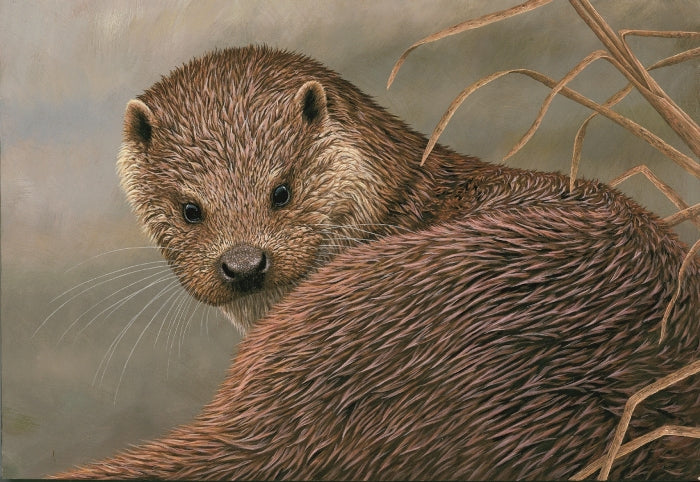 Otter, limited edition print by Robert E Fuller. Shop Now
Otter, limited edition print by Robert E Fuller. Shop Now I’d heard reports that Tophill Low Nature Reserve, near Driffield was enjoying reliable sightings of them so I contacted Richard Hampshire who is the head warden there. He agreed to be my otter guide. So one evening, we headed up to the North Marsh Hide, which overlooks some lagoons. Richard was just explaining how a dog otter comes up a channel on the right of the hide around 8pm, when a kingfisher appeared in front of the hide and posed for some photos.
Tophill Low is a great place teaming with wildlife. It’s actually an active Yorkshire Water Treatment Works built in 1959. Around the perimeter of this 300 acre site a network of marshes, ponds, woodlands and grasslands attract over 160 bird species and the two reservoirs have SSSI status for the massive wildfowl numbers.
On this occasion, the reed beds were alive with warblers, dragonflies skimmed over the water and a little grebe settled down to brood her three chicks for the evening. She had created a floating nest close to where the otter usually passes. Swallows, swifts and house martins were filling the air. I don’t mind waiting for something to happen when there is so much to see in the meantime.
I was photographing the little grebe on its nest when she suddenly tightened up her feathers and looked alert.
Richard knew that this meant the otter was on its way. As if on cue, the peace and stillness of the lagoon was shattered as a line of bubbles streamed up the channel tracing the otter’s movement underwater.
The grebe and its three chicks dived into the water. Reeds were shaking as the otter swam between them. Its head came up out of the water and as I tried to take a photograph of it I noticed that it was eating something.
It was soon off hunting again a line of bubbles letting us keep track of it. The otter popped up again briefly on the edge of the reed bed, giving me just enough time for a quick photograph before it set off as quickly as it had appeared. It was a short sighting, but nevertheless breathtaking. The alarm calls of a moorhen amongst others rang out in the distance giving me clues as to where the otter had gone. The grebes appeared back on the surface one by one but there was one chick missing. I had been so eager to see the otter, yet I had an uneasy feeling that this big male had taken one of the chicks for a snack. It’s all part of nature I suppose and at least there were another two strong looking chicks left.
For information on Tophill Low and how to get there follow this link.














